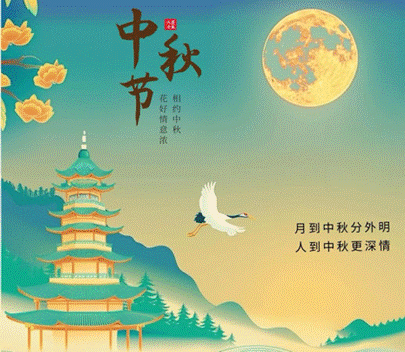
As the summer heat fades and the first cool breezes of autumn arrive, Chinese communities around the world prepare to celebrate one of the most beloved traditional festivals—the Mid-Autumn Festival, also known as the Moon Festival. Falling on the 15th day of the eighth lunar month, this day is marked by a full, bright moon, family gatherings, and the iconic treat: mooncakes. But beyond the festivities lies a rich tapestry of history, mythology, and cultural significance that has evolved over millennia.
Ancient Origins: From Harvest Rituals to a National Festival
The roots of the Mid-Autumn Festival stretch back over 3,000 years to the Shang Dynasty (c. 1600–1046 BCE), when ancient Chinese emperors worshiped the moon as a symbol of fertility and abundance. These imperial rituals were held to give thanks for a bountiful harvest and to pray for continued prosperity.
During the Tang Dynasty (618–907 CE), the festival began to gain popularity among the general population. It was during this period that moon-viewing parties became a common tradition, with poets and scholars composing odes to the moon’s beauty. By the Song Dynasty (960–1279 CE), the Mid-Autumn Festival was officially recognized as a national holiday, and many of the customs we know today—such as eating mooncakes—were firmly established.
The Legend of Chang’e: A Myth Shrouded in Moonlight
No discussion of the Mid-Autumn Festival is complete without mentioning the legend of Chang’e, the Moon Goddess. According to ancient mythology, Chang’e was the wife of Hou Yi, a skilled archer who shot down nine of the ten suns that were scorching the earth. In reward for his heroism, Hou Yi was given an immortality elixir.
Tragically, Chang’e drank the elixir by mistake (or, in some versions, to protect it from thieves) and floated up to the moon, where she became trapped. She is said to live in a palace on the moon with her jade rabbit, who pounds herbs to make the elixir of immortality. The story of Chang’e explains why the moon is central to the festival—it is a symbol of longing, reunion, and the enduring bond between loved ones.
Why Mooncakes? A Symbol of Unity and Rebellion
Mooncakes, the festival’s most famous delicacy, have a history as fascinating as the festival itself. These round pastries, filled with sweet lotus seed paste, red bean paste, or salted egg yolks (representing the full moon), are more than just a treat—they are a symbol of unity and family.
The tradition of eating mooncakes is said to have originated during the Yuan Dynasty (1271–1368 CE), when China was ruled by the Mongol Empire. To organize a rebellion against the Mongols, revolutionary leaders hid secret messages inside mooncakes, instructing people to rise up on the night of the Mid-Autumn Festival. Since then, mooncakes have become a symbol of resistance and national unity, as well as a way to honor the harvest.
Modern Celebrations: Honoring Traditions in a Changing World
Today, the Mid-Autumn Festival is celebrated with a mix of ancient traditions and modern twists. For many families, the most important part of the festival is the family reunion dinner, where loved ones gather to share a feast of traditional dishes—such as roast duck, taro, and pomelo—and enjoy the full moon together.
After dinner, families often go outside to admire the moon, light colorful lanterns, and give mooncakes as gifts to friends and relatives. In recent years, new traditions have emerged, such as mooncake-making workshops, lantern festivals, and even “mid-autumn parties” in cities around the world, blending Chinese culture with local customs.
The Meaning Behind the Festival: Gratitude, Unity, and Hope
At its core, the Mid-Autumn Festival is a celebration of gratitude—for the harvest, for family, and for the blessings of life. It is a time to pause and reflect on the importance of unity, as the round moon and round mooncakes symbolize completeness and togetherness.
In a world that often feels fast-paced and disconnected, the festival reminds us to slow down, cherish our loved ones, and look forward to the future with hope. Whether you’re gathering with family under the moonlight or sharing mooncakes with friends far away, the Mid-Autumn Festival is a timeless reminder of the power of tradition, community, and the enduring beauty of the moon. As the moon rises high this Mid-Autumn Festival, let us take a moment to honor the past, celebrate the present, and embrace the unity that binds us all. Happy Mid-Autumn Festival!